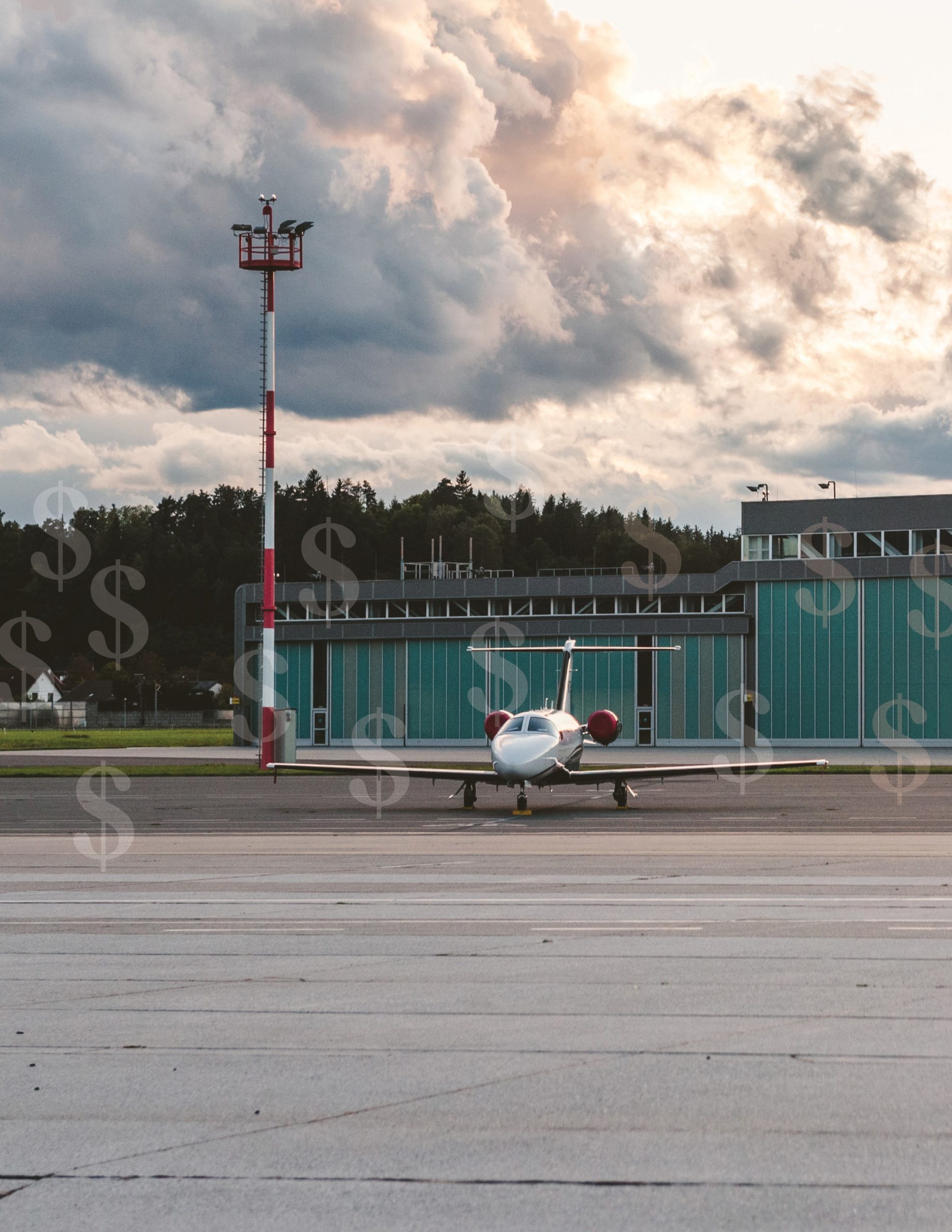In recent years, the general aviation industry has been roiled by merger and acquisition (M&A) activity, which has seen such iconic fixed base operators (FBOs) as Signature Flight Support and Atlantic Aviation change ownership through mega-billion-dollar deals financed primarily by private equity investor organizations. But do deals of this magnitude represent the future of the general aviation industry, in which private equity companies will predominate, or are they more indicative of “striking while the iron is hot” at a time when a global pandemic has given general aviation a tailwind? To begin to answer that question, it is helpful to have some idea of how private equity investors work.
According to Adam Guthorn, Managing Director of Alton Aviation Consultancy in New York, private equity investors normally prefer to invest in established and stable cash-flow generating businesses that have predictable revenue streams. “Ideally that would be in underlying markets that are growing at a healthy rate,” he explained.
Along with that, investors generally want to understand company positioning, market dynamics, growth prospects, and exit considerations. For company positioning, investors seek to understand what Guthorn terms an acquisition target’s “moat,” or how easy or difficult it would be for another player to disrupt that position and steal market share.
“Ideally the company is positioned in a large and stable market that is growing in a predictable fashion,” Guthorn noted. “For many companies in business aviation, growth has been highly correlated with some combination of gross domestic product (GDP), equity market performance, and the number and aggregate wealth of high-net worth individuals.”
Interestingly, said Guthorn, a declining market is not necessarily a “deal breaker” if investors can convince themselves that a target is well-positioned to be one of the last players standing in a market that may otherwise have positive attributes, such as increasing pricing power for the remaining players. “Organic growth—by riding the wave of a growing market—is one path to increasing a company’s value, but investors want to understand the inorganic paths to growth as well,” he noted. “That includes other acquisitions that can be bolted on to strengthen existing market position or to expand the breadth or reach of offerings.”
Most private equity investors, Guthorn pointed out, are focused on a typical five- to seven-year hold period for their investment, but are also concerned about longer-term trends that may impact a future buyer’s view of the business when it comes time to exit. “Investors want to ensure that whatever they are buying, managing, enhancing, and possibly merging with other targets over time is sufficiently attractive to some future owner of the business, whether they are another financial investor or a strategic investor from industry,” Guthorn said.
In aviation, he noted, private equity has been particularly interested in FBOs; maintenance, repair and overhaul (MROs); and specialty manufacturing. “They exhibit the key characteristics sought by private equity, specifically defensible moats in growing markets,” he explained. “On the other hand, the charter, fractional, jet card markets are highly fragmented with low barriers to entry and no player has more than a 10% share of total flying hours. Accordingly, that space has failed to attract significant attention from most private equity firms.”
In fact, the growth of the general aviation industry has been generally positive over a long timeframe. As Guthorn reported, from 2009—the end of the worst of the global financial crisis—through 2021, US business jet departures grew at a compound annual growth rate of 3.3%. COVID, he remarked, was “a brief interruption to the multi-decade thesis that business aviation is highly correlated with economic activity, with activity levels contracting sharply” in mid-2020.
“Continuing health concerns and ongoing disruption in the commercial airline market have created a perfect environment for business aviation to introduce itself to a whole new customer base during the pandemic,” Guthorn said. “For example, leisure demand for business aviation use has risen considerably since 2020, and while some of this demand may revert to commercial airlines eventually, a meaningful portion of new customers will remain in the market and continue to embrace business aviation, providing further support for the growth of the market.”
Asked about any role for private equity in airport development, Guthorn’s response was that while private equity investors have been enthusiastic about investments in airport tenants—namely FBOs and MROs—the US market has not yet presented a broad set of opportunities around the redevelopment of whole airports. “There is an entire, well-capitalized universe of infrastructure investors who, compared to traditional private equity investors, are willing to invest on longer time horizons and have more modest return expectations that would whole-heartedly welcome a greater embrace of airport privatization in the US.”
Along with that, Guthorn said that he does not expect to see private equity investors play a role in advanced air mobility (AAM) or sustainable aviation fuel (SAF).
“Companies pursuing cutting-edge new technologies that are still pre-revenue, such as AAM vehicles or hydrogen propulsion, would be more the domain of venture capital (VC) rather than private equity. The typical VC investor has the appetite for and is structured to pursue earlier-stage bets in unproven markets.”
“Business aviation is a growing business that has proven to be resilient and increasingly accessible for new customers,” explained Greg Blank, Senior Managing Director at New York-based Blackstone Infrastructure. “Private equity and infrastructure investors are turning their attention to this space given there is a compelling customer value proposition, strong long-term growth fundamentals, and declining barriers to entry.”
As Blank pointed out, private equity funds and bank loans can both be used to fund growth projects. “However, private equity and infrastructure capital have five distinct advantages—the ability to add value, flexibility, risk tolerance, long duration of capital, and certainty of funds,” he said. “That is not different for business aviation.”
Blank noted that Blackstone Infrastructure believes that the private equity and infrastructure community is interested in all trends within business aviation, including AAM support infrastructure and, potentially, start-up AAM original equipment manufacturers (OEMs). “These trends are critical to both making sure current investments are well positioned to grow in the future and to identifying new potential investments,” he pointed out.
Two primary factors, according to Blank, are contributing to interest in the general aviation sector by private equity funds. “First, there is COVID and along with that, a decreasing cost of entry has introduced a new cohort of customers to private aviation, many of whom are expected to continue using it,” he remarked. “Second, private aviation is an industry in transition, particularly on matters relating to the future of mobility and sustainability. Private equity is uniquely positioned to facilitate this transition as our long investment horizons allow us to do well by doing good.”
Shawn Vick, a Partner in AE Industrial (AEI) Partners in Boca Raton, Florida, pointed out that private equity has been active in business aviation for decades. “Business aviation has significant industrial infrastructure, and the industry fundamentals are strong. The demand is there for access to private aviation, and will only increase throughout the decades ahead,” he remarked.
As a result, said Vick, private equity has over the preceding decades taken significant stakes in large service providers. He cited Blackstone’s recent acquisition of Signature Flight Support and KKR’s purchase of Atlantic Aviation as examples. “These are both very large-scale service providers with several hundred FBOs between them,” he remarked.
As Vick explained, business aviation has naturally attracted private equity given the industry’s long period of sustained growth since the early 1960s.
“What you saw was an evolution in the development of aircraft, airports, MROs, management companies, and the FBO industry offering fuel and hangars,” he noted. “By the 1990s, the fractional ownership and membership programs came along. So really, for the past 60 years, there was a pattern of very rational annual growth, decade after decade.”
He added that in the first decade of the 21st century, there was a substantial increase in production by the business aircraft OEMs prompted by rising global GDP and wealth accumulation taking place in the US, Europe, as well as Asia and the Middle East.
“Then came the Great Recession, which disrupted the industry. Yet, even at the height of the Great Recession, there were still over 1,400 pre-owned transactions, and 600 new aircraft deliveries annually, adding to an installed base of over 17,000 business aircraft at the time. The installed base today is approaching 22,000 world-wide and growing,” Vick explained.
Today, said Vick, private equity investors see acquisition opportunities where second or third generation long-time owners are seeking either an exit strategy or, alternatively, strong capital partners who understand the industry and are willing to provide capital for growth.
“For instance, at AEI we are interested in service providers and suppliers who are integral to the OEM supply chain, which includes businesses such as Part 145 MROs, parts manufacturers, component overhaul providers, interior refurbishment, avionics repair, Part 135 operators, and management companies, just to name a few,” he remarked. “We don’t focus on just one element. There are many opportunities to provide growth capital. If you break it down, there are about 30 verticals and 30-40 sub-verticals in the industry presenting those opportunities.” The verticals, Vick added, are the supporting ancillary businesses. In aviation they include MRO, aircraft management, charter services, and FBOs, to name just a few. The sub-verticals support the verticals, and include supply chain companies, manufacturing parts such as wire harnesses, landing gear, tires, wheels, brakes, actuators, and avionics.
Asked about a role for private equity in airport development, particularly hangar properties, Vick said that he would expect continued interest in this by private equity firms. “We would have an interest in looking at this, but there will be more opportunities for those types of investments through the acquisition of existing service providers, such as FBOs already on the field, that have the local and state relationships necessary to approve development.”
He also revealed that AEI is looking closely at AAM, particularly through its early-stage AEI HorizonX venture capital fund, although the company’s focus is more on the power plant and supporting supply chain. As for potential for private equity in SAF, Vick reported that a growth opportunity is there. “SAF is here to stay,” he remarked. “Capacity is quite small right now, so that presents an opportunity for private equity.”
According to Dr. Dirk Laukien, Founder and Active President of Black Forest Ventures, “The general aviation business has always had high barriers to entry,” which he said is what makes it more appealing to investors. The Woodlands, Texas-based private equity firm’s portfolio includes the Galaxy FBO chain—currently with three locations in Texas—along with charter management company Wing Aviation and Paradigm Helicopters.
Laukien also cited the popularity of fractional ownership and membership models attracting more business and leisure private flyers as adding to the appeal of general aviation to private equity investors. “Most recently, the pandemic changed the landscape for traveling and helped many to see the value and efficiency that GA offers,” he noted. “The trend looks even more positive due to the ongoing interruptions commercial airlines face today.”
In tandem with those dynamics, Laukien pointed to the consolidation trends in the general aviation support industry, currently fueled by the large infrastructure funds and the special purpose acquisition companies, which have helped convince many businesses to change hands recently. “That consolidation also brings uncertainty to smaller players as they fear tougher competition in the future,” he said.
In spite of the available opportunities, Laukien cautioned that there is another side of the coin. “While the Covid-19 pandemic accelerated the growth in the industry, it also made merger and acquisition activity more difficult,” he said. “For starters, some companies have handcuffed themselves with the government loan restrictions. But more importantly, the heated market that started in late 2020 has skewed many financial models, making due diligence much more difficult.”
At Black Forest Ventures, Laukien said, the belief is that investing in general aviation offers a more stable, long-term return on investment, especially when combined with real estate and low-leveraged financial resources. “That’s why we’ve invested in fixed based operations, such as our Galaxy FBO brand, which is also supporting our other aviation investments, including Wing Aviation and Paradigm Helicopters.”
With respect to potential opportunities at airports, Laukien reported that, depending on location, aircraft storage is still in high demand, making FBO and hangar developments of interest to investors. “In fact, there has been a flurry of new development opportunities around the country at major airport locations,” he said. “New airports are not being built and greenfield real estate is hard to come by, which is why the majority of new on-airport opportunities are in redevelopment of existing space.”
As for the long-term impact of private equity investors on general aviation, Laukien added, “Private equity will ensure the growth of untapped new markets, as some of the larger public corporations may be slow to venture into new opportunities.”






